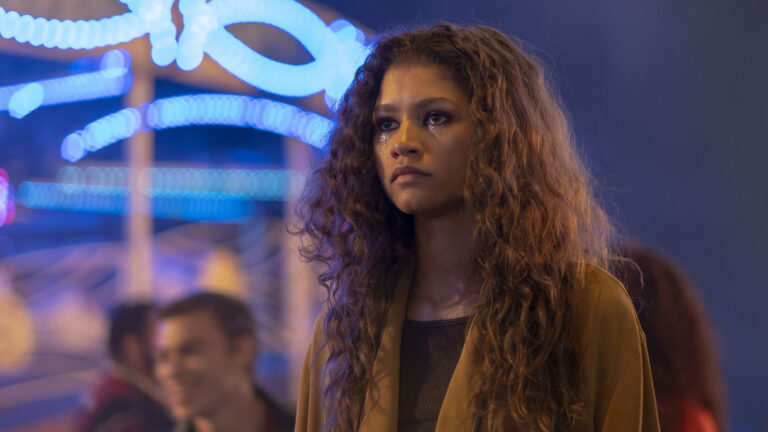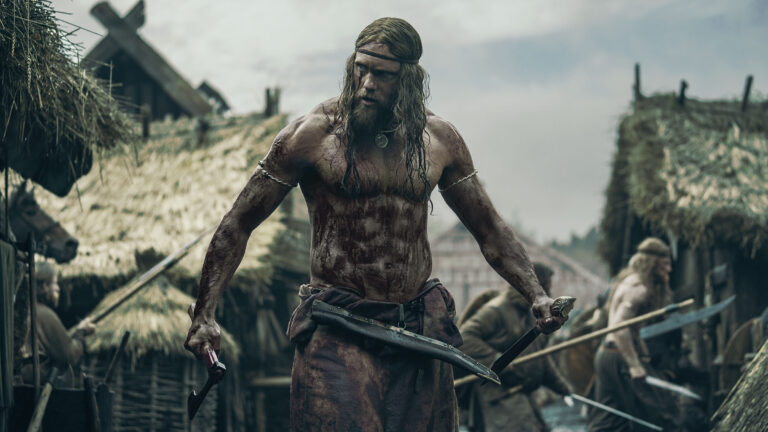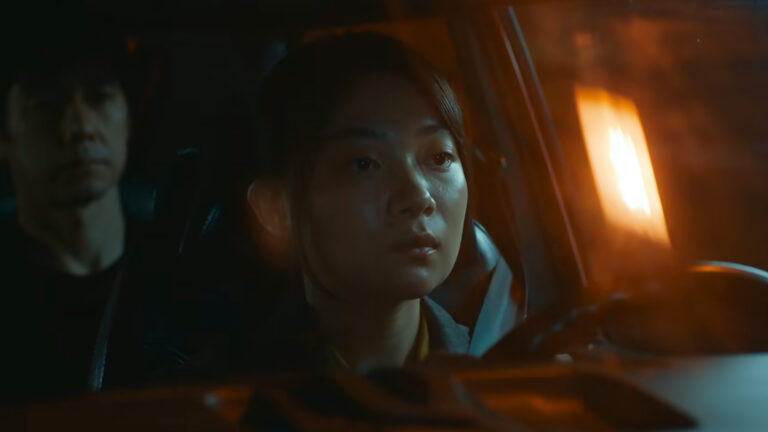With Marvel’s Shang-Chi and the Legend of the Ten Rings launching to extremely positive global box office figures (tipping Ryan Reynold’s Free Guy off the top in the process), now is a great time to hear from the three editors behind the project that takes up the baton from Black Widow.
Today we’re talking with Harry Yoon, ACE, Elízabet Ronaldsdóttir, ACE, and Nat Sanders, ACE.
Each brings their own set of skills and experience to the project—Elízabet is no stranger to action features, with titles like Atomic Blonde, Deadpool 2, and John Wick under her belt; while Harry and Nat edited on Oscar winners Minari and Moonlight, among others. So it’s clear that the second movie in Marvel’s Phase Four was in very good hands.
Listen while you read…
HULLFISH: Nat, you told me this great story about meeting the director, who you’ve worked with numerous times at this point, right?
SANDERS: Right. This is our fourth time working together.
HULLFISH: Tell me about how you guys met because I tell this story all the time.
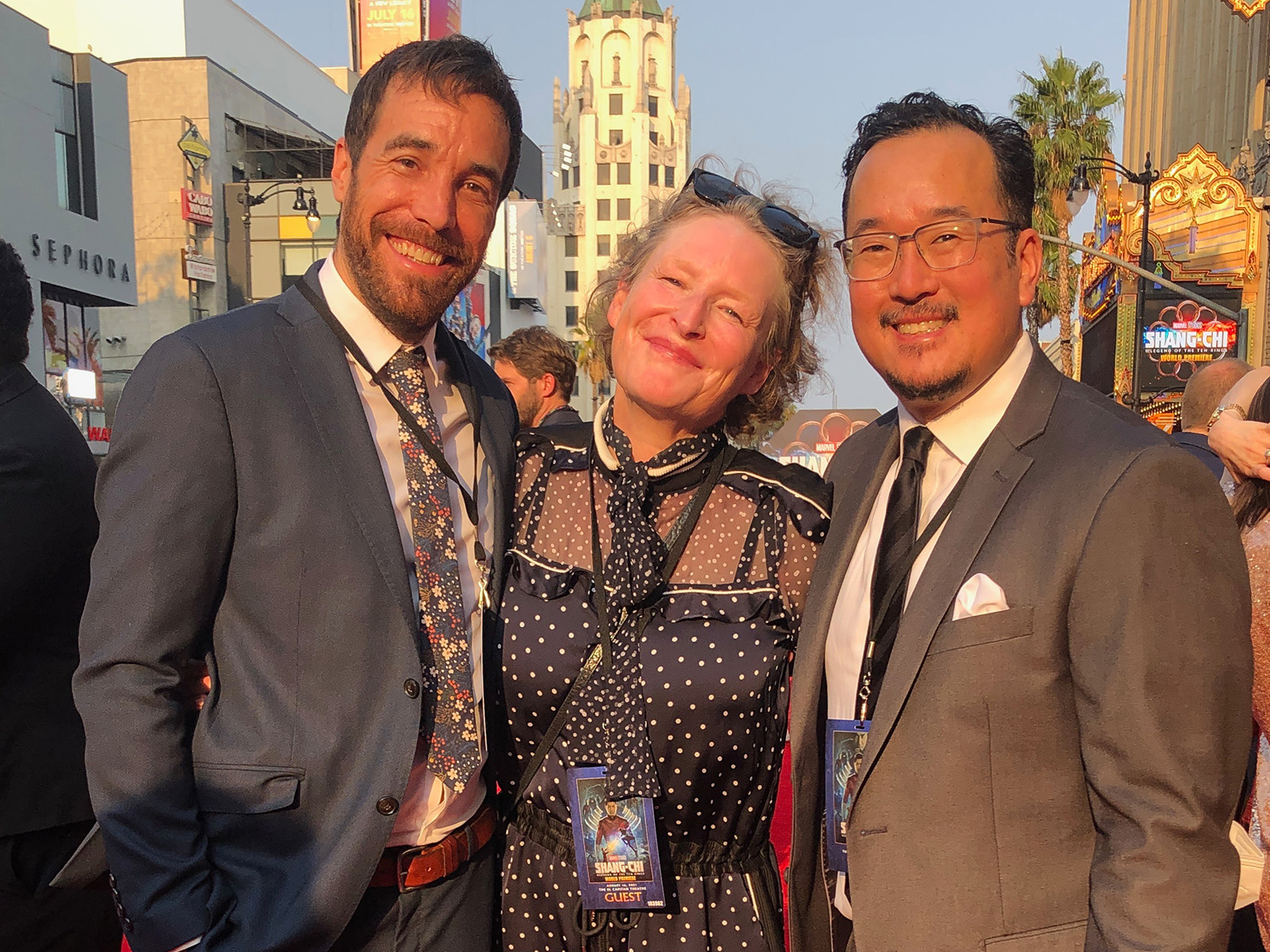
SANDERS: That’s nice to hear. My first feature was Barry Jenkins’ first feature in 2008, and I’d been so hungry to break into the film industry. Before that I’d been working in reality television and so I did Barry’s movie for free. I was so hungry to keep going that I did a couple more movies for free. It took Barry quite a while to make his next film, which ended up being Moonlight. So, somewhere during those eight years, I realized I needed some more directors to work with, so I started watching short films.
There was a great quarterly DVD that was put out on Netflix from a company called Wolfen, where they would curate the best shorts out of Sundance, SXSW, and international festivals. I started watching all those and I saw a short called Short Term 12 that really blew me away. It was so emotional, raw, and real. I loved it. So, I looked up the director and stalked him a little bit online.
I happened to see that he had edited the short himself. Sometimes I feel like directors more often than not would like to work with an editor in those cases, but maybe they didn’t know someone that they trusted with it, or maybe felt like “I don’t have any money” so were questioning if someone is going to be able to do this as dedicated as I would be if they’re working for free and doing it on the weekends. So, he’d cut it himself and did a great job.
I just happened to see him the next year at Sundance. I made a beeline up to him, told him how much I loved the short, and just tried to jam my foot in the door. He happened to have seen some of the films that I’ve worked on and we got lunch and just kept the conversation going. The next year he made Short Term 12, the feature. I did that with him and it’s been off to the races since.
I would always just vomit out my admiration for them and try to shove my foot in the door, and it worked a couple of times.
HULLFISH: I love that idea. Especially at Sundance, I think those directors that are cutting shorts are there and want to talk to people after their film shows. They’re happy to chat with just about anybody. Like you said, if the guy edited his own movie, chances are that he would probably like to have another editing voice.
SANDERS: Especially early in my career in cases like that, I’ve always found that it’s almost like the very opposite of dating. With dating you need to play it cool and you need to pretend like you don’t care, but I always found when going up to directors whose work I admired that they want to work with people who are passionate about their work and their vision. So, I would always just vomit out my admiration for them and try to shove my foot in the door, and it worked a couple of times.
HULLFISH: Harry, you and I have talked before about some projects that are very different from this one, Minari and The Best of Enemies. I don’t know if you know this, you even got a mention by Stephen Mirrione on The Revenant. He talked about you.
YOON: Oh, that’s so awesome. He’s been a long-time mentor, so it’s great to hear that.
HULLFISH: So, how did you end up on this project?
YOON: I feel incredibly lucky to join this team. After they finished their director’s cut—and it was largely because there was such a delay during production due to COVID—they were in Sydney for over a year, I think, shooting because of the delay in the middle of their shoot schedule. So, Elísabet and Nat started on the project from principal day one, and then they stayed in Sydney for over a year cutting dailies and ultimately the director’s cut.
When it came time for them to come back to the States, Elísabet needed to leave for her next film. So, they needed a second editor because, as everybody knows, the workload on a Marvel film is pretty significant.
The hype train has left the station, so grab on and hang tight. Make history with us on September 3rd. pic.twitter.com/0q3jFY8IxH
— Simu Liu (@SimuLiu) August 31, 2021
Then, thankfully there was about a month of overlap during the beginning of the producer’s cut where the three of us got to really put our heads together and begin that brainstorming process of what’s working, what’s not working, what could be more clear. We really began that process of experimentation together. Then, I took over for Elísabet when she had to leave for her next show.
HULLFISH: You bring up an interesting point because you were saying during that overlap that you were having these discussions about what to do. This is an origin story, it’s a little front-loaded, of course, because of that. You’re trying to set up a lot in the first act. Talk to me about what kind of discussions there were. I’m sure you guys thought that you had to get to adult Shang-Chi quickly. What was the evolution like of that first act of the film?
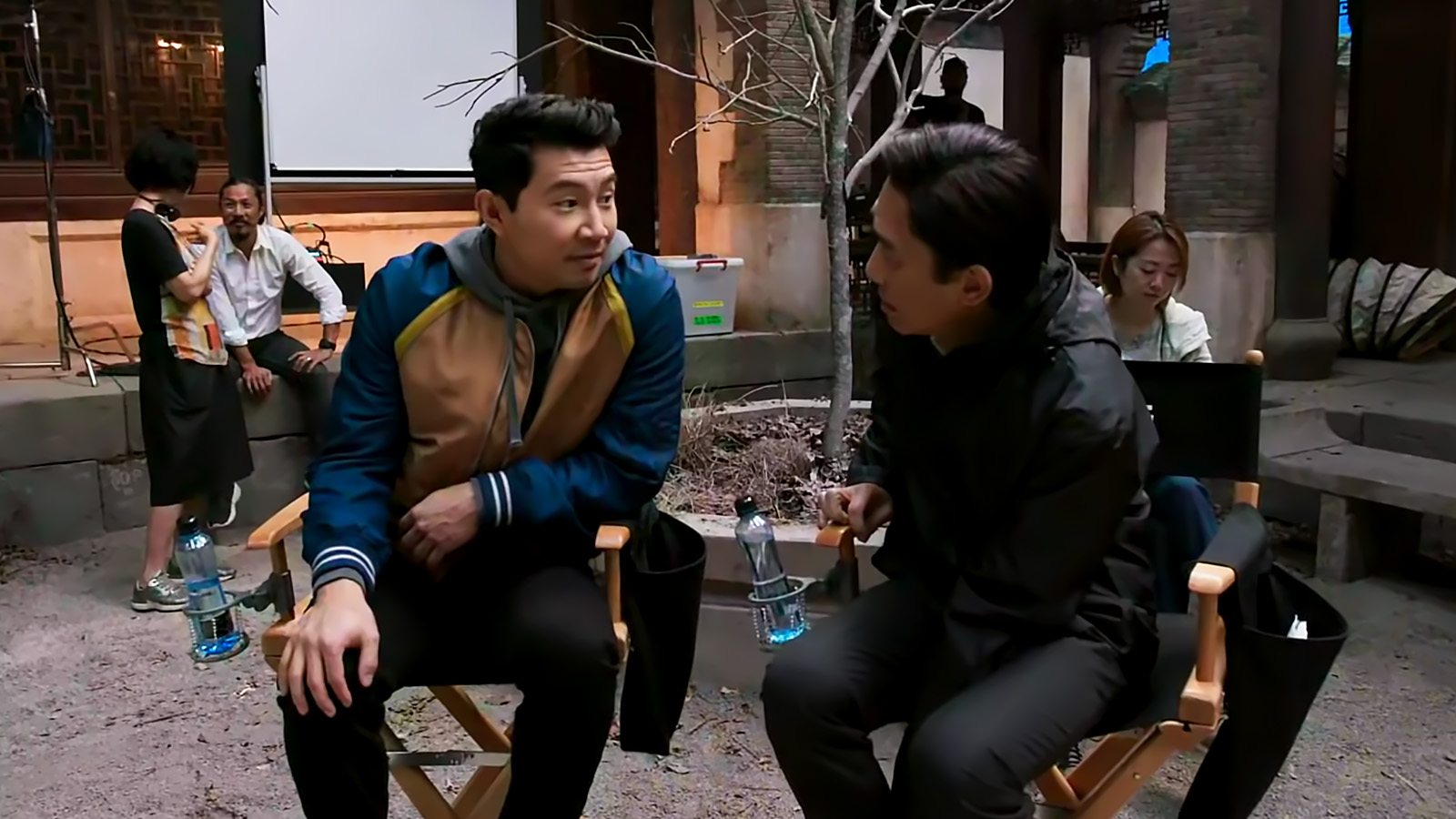
RONALDSDÓTTIR: Nat and I knew it was too long, so we had many discussions about it and I did some flashbacks tests. Nat and I sat down and talked about it and tried some more tests. Then, we introduced it to Destin [Daniel Cretton], who fell in love with it and took it further. He just made us do flashbacks all the way through the movie, which was great. We loved that.
SANDERS: I believe we showed him the flashback work you were doing, and I think we watched the director’s cut the scripted way because we felt like he should see it that way once. It had really been nine months at that point between the first phase of shooting, the COVID hiatus in which we kept working, and then when production ramped up.
So, we watched the scripted version and it was very clear that there were a lot of good pieces there and that no one was worried, but it didn’t have the emotional impact that you wanted. There’s so much emotion that worked great in the script. It really worked as this great prologue where you go through the story with the parents, and then at the end of it, you land with Shaun in San Francisco.
So, we all came together and talked the next day and hit upon this idea where rather than finding out everything within those first 20 plus minutes of the movie, interweaving that information throughout the story. In reality, it took too long to get to Simu [Liu – the actor playing Shaun/Shang-Chi] and we found there was no mystery, and later when you wanted to have these emotional impacts, they weren’t hitting.
YOON: Everything that you see in the past actually was front-loaded in a very long prologue. A lot of the things that you see later on in the film were actually front-loaded upfront. What was interesting was I didn’t see any of that. One of the reasons that the team thought it would be very useful for me to come on at that point was they had done this amazing restructuring, but they didn’t have fresh eyes that didn’t know the story or the script. So, I came at it completely fresh as if I was an audience seeing it for the first time.
What was remarkable was that the vast majority of that restructuring felt like the way that the script was written. That’s a testament to the work that Elísabet, Nat, and Destin had done through the director’s cut to make it feel seamless. There are still cuts today where it just feels so perfect that a certain flashback lands when it does. That structure was very much in place.
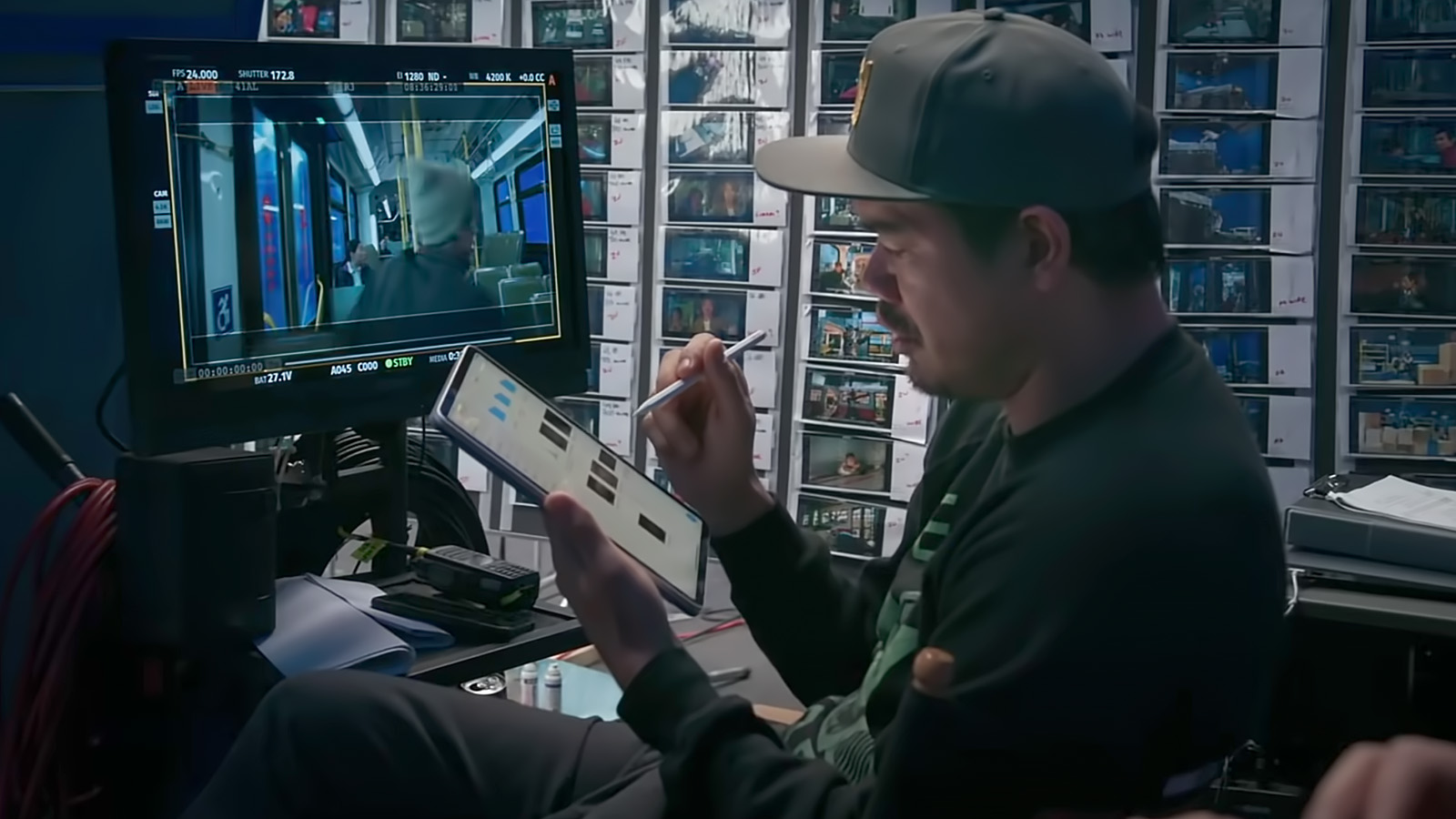
Then, we began the discussion of how we can keep refining the front of the movie further, and then ultimately where we go to. We asked ourselves, “How do we refine the flashbacks a little bit more so that we show just enough and no more?” That was where the discussion was once we started up in January.
HULLFISH: When you see the film put together, you realize that as good as the script was, something else has to happen, and that just fascinates me. It’s like that old saying that there’s the story you write, the story you shoot, and the story you edit, and they’re all three totally different movies.
It’s a completely different medium to tell a story. So, obviously, it’s not going to be the same.
RONALDSDÓTTIR: It’s a completely different medium to tell a story. So, obviously, it’s not going to be the same. It doesn’t mean it’s not important in the script because without the script, the actor might not have given that look. It’s just a different medium to tell the story. We would be useless if it didn’t need any work once it was shot. We wouldn’t have a job. So, I’m very happy that we get to work.
HULLFISH: Knowing that the flashbacks were all really front-loaded, how do you decide where to drop each flashback?
RONALDSDÓTTIR: Initially, between me, Nat, and Destin, we used scene cards. We had a card with an image for every scene and we would do the first pass on the wall like a puzzle, discussing how much we want to know at what point. Destin liked this a lot because when we got to the village, we knew everything. So, we asked what we could move up and reveal in the village to make his journey there more effective.
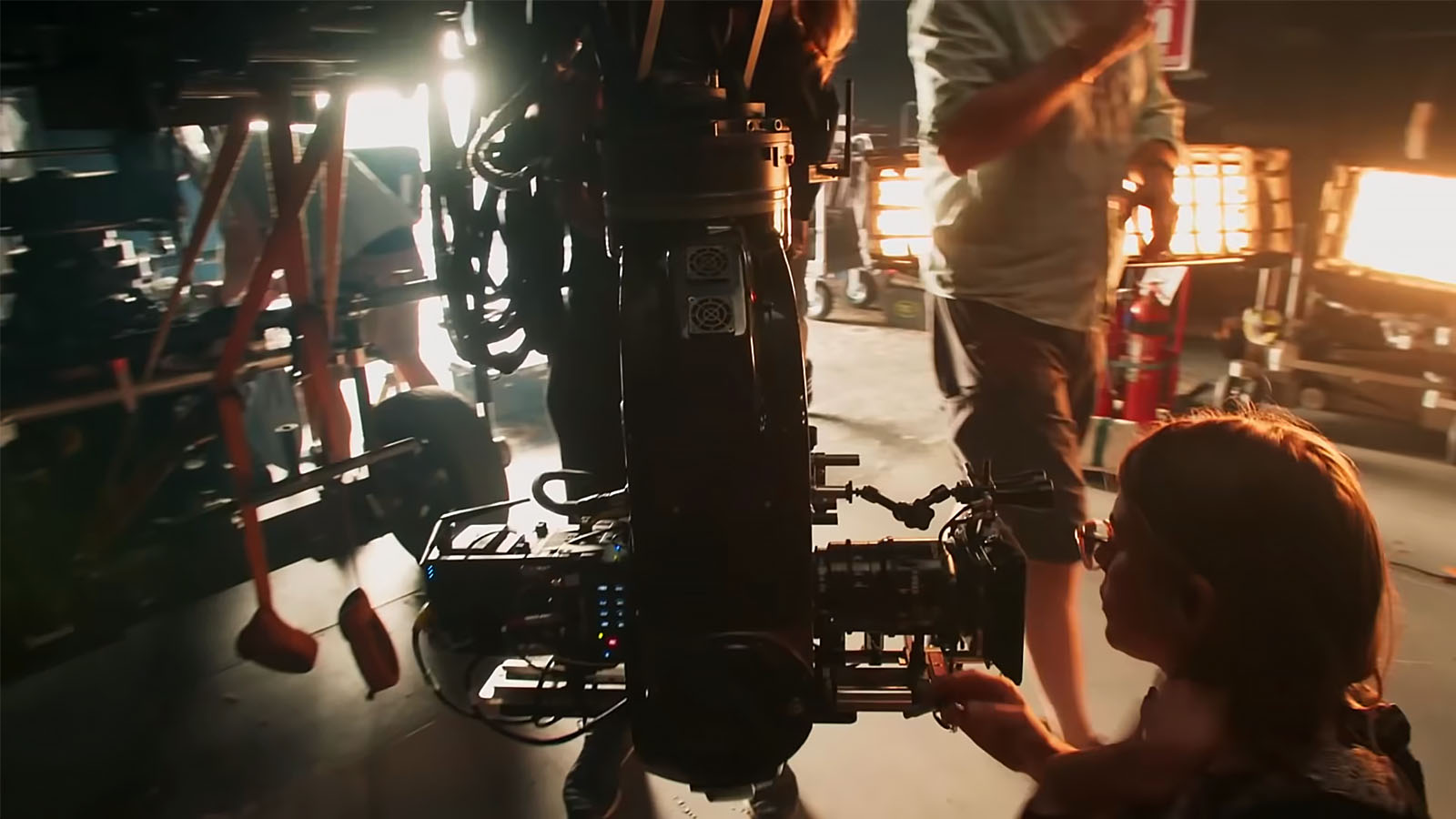
SANDERS: Moving things around and talking was definitely the first phase. That paper edit helped us talk through, “What are the good ramifications of this? Are there any downsides?” This was all done in a relatively short amount of time. Normally, a director’s cut would be maybe ten weeks before you’d have to show the producers of the studio, give or take. In this case, it was six weeks. That’s just the way Marvel works. Kevin [Feige], Louis [D’Esposito], and Victoria [Alonso] are really part of the creative process. You show it to them pretty early before you’ve gone down too many paths and tried out too many things, so they can be a part of it.
YOON: Just circling back to one of the things you said about the difference between the story on the page, the story that’s shot, and the story in the cutting room—especially in terms of something like a Marvel film, with an origin story—there’s so much mythology and world creation that’s happening. There’s an explanation of powers, particularly of this new artifact. What are the Ten Rings? How do they get their powers? How do they empower Tony Leung’s character and Simu Liu’s character?
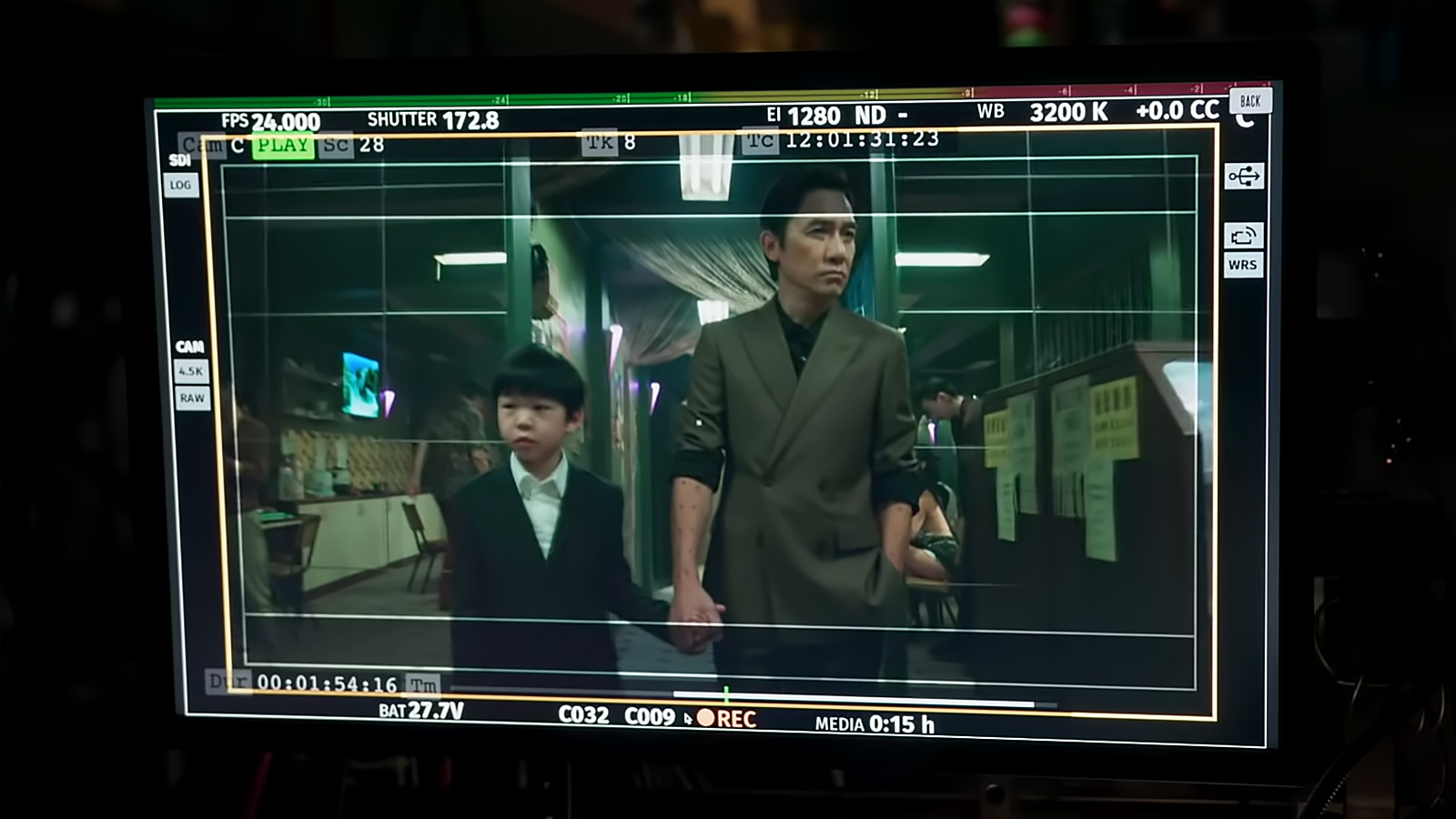
So much of that explanation is getting everybody to understand who’s about to shoot the movie. Then, you have to get everybody to try to live it out as they’re shooting the movie, particularly with super complex stunt work like the fight scenes in this. You’re focused on so many different goals and by the time it gets to us, we realize, “We have all of this explanation and world building. It’s a little bit too much if we put it all on screen.So, what can we take away so that the world and mythology creation still feels clear and satisfying to the audience and ultimately grounded in the characters that hopefully the audience is falling in love with?”
What can we take away so that the world and mythology creation still feels clear and satisfying to the audience?
It becomes this really interesting exercise in removing some information here and some exposition here, and then adding little bits of exposition so that it feels organic to that kind of emotional story that’s being told. The demands of something in the MCU is that there’s so much you have to understand in terms of powers and things that are beyond central relationships like father and son or brother and sister.
Those are the things that you’re normally trying to really tease out, but in addition to that, you’re saying how these powers work and how this character that seems out of nowhere fits within this story. To try to do that organically becomes a really wonderful puzzle to solve.
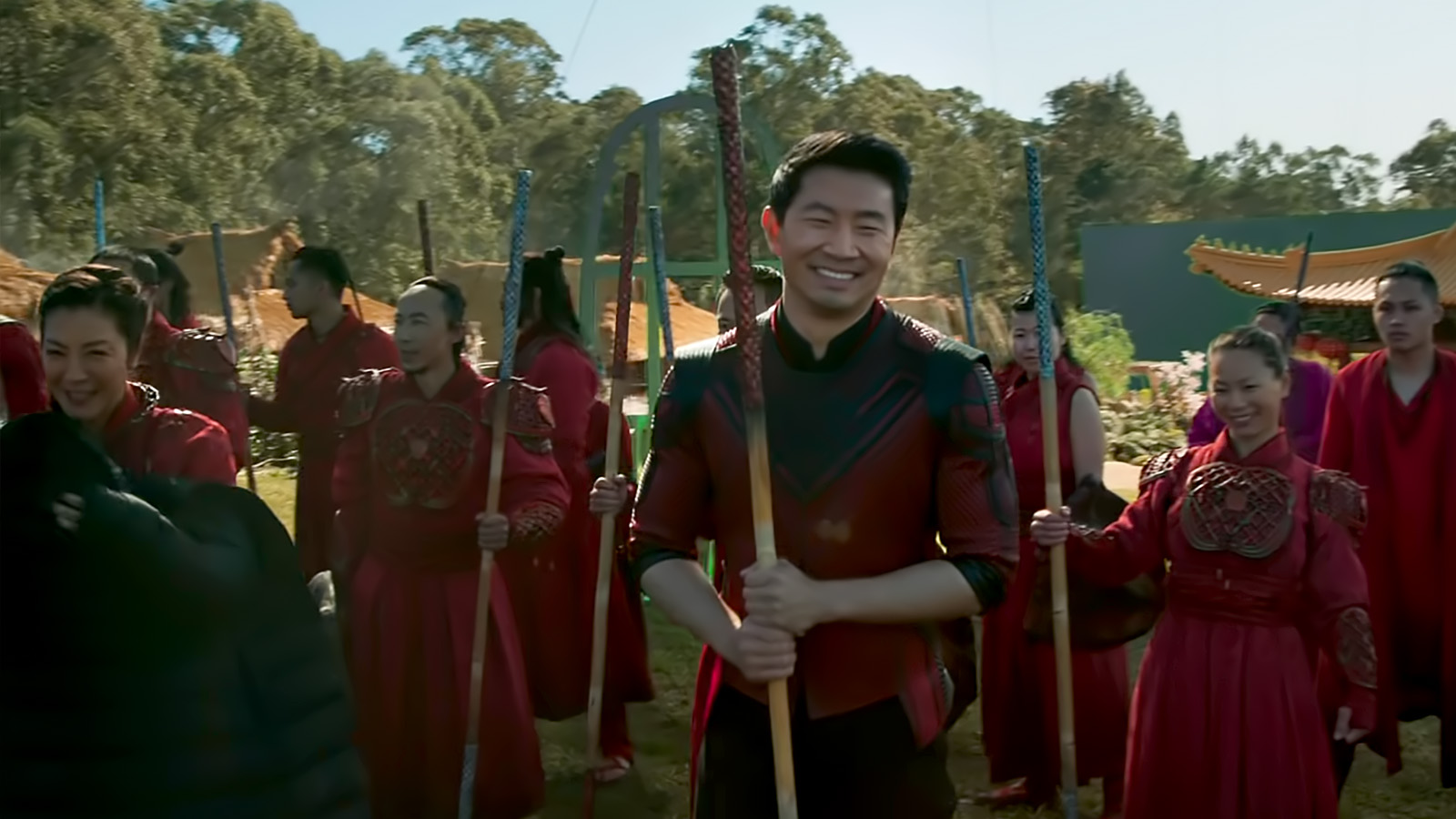
HULLFISH: How did you guys collaborate as the film started to evolve?
RONALDSDÓTTIR: Nat and I spent the most time doing this. We picked scenes, but it depended on the shooting. We actually worked really well together. I’m very proud of my collaboration with Nat. It really went well. We would sometimes watch each other’s scenes—it only happened once. We were going to do this weekly, but it only happened once when we went down to the cinema to watch what we’ve done—but we talked extensively and then scenes went back and forth.
HULLFISH: None of you guys had previously worked with a lot of editors as a group, correct?
YOON: For me, I think the most recent thing was probably coming off of First Man as an additional editor with Tom Cross and John To. That was an experience in understanding how to divide the film. For that film, it was a little bit all over the place. We were touching every scene at different times. Once I came on [Shang-Chi], all the scenes were done, all the things were built except for the stuff we shot during additional photography.
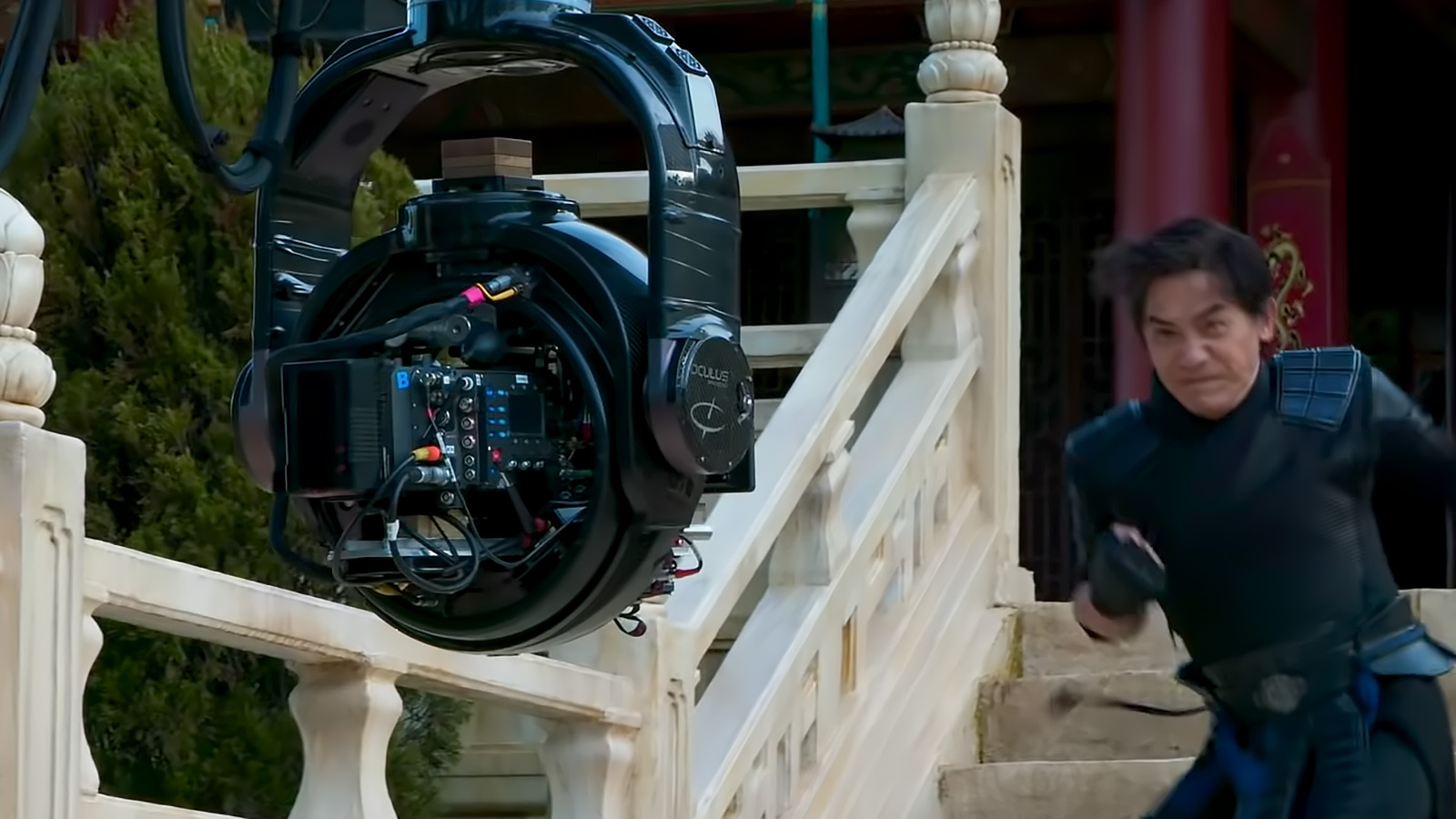
Pretty organically, I think Nat and I decided just to cut the movie in half. He took the first half of the movie and I took the second half of the movie. I don’t know if we always intended for that to be a permanent thing, but once we were on the wild ride that is basically the producer’s cut—which is you preparing for audience screenings, doing notes, brainstorming, and preparing for additional photography—we pretty quickly realized that there’s no way that we can move beyond that division.
SANDERS: Later in the process, it did become pretty necessary to have the VFX team to just be able to know that, “This shot is in reels one to five, so we’ll go to Nat with that one. This one’s in reels six to ten, we’ll get to Harry with this.” It would get pretty complicated if you were still interweaving each other’s work pretty dramatically at that point, but I still don’t know how other people do it. I would love to find out from other editors how you split things up.
In our case, it was just on a day-to-day basis as scenes came to us and we’d say, “I’ll take these three scenes. How about you take these three?” We would just try to always be fair and equitable in how we’d split them up during the shoot.
Once Harry came on, everything started to get switched up in a good way. I don’t know if there’s any scene in the movie that didn’t get touched by at least two of the three of us, but it’s always great to get other people’s input and everything kind of got touched by someone else in a really good way.
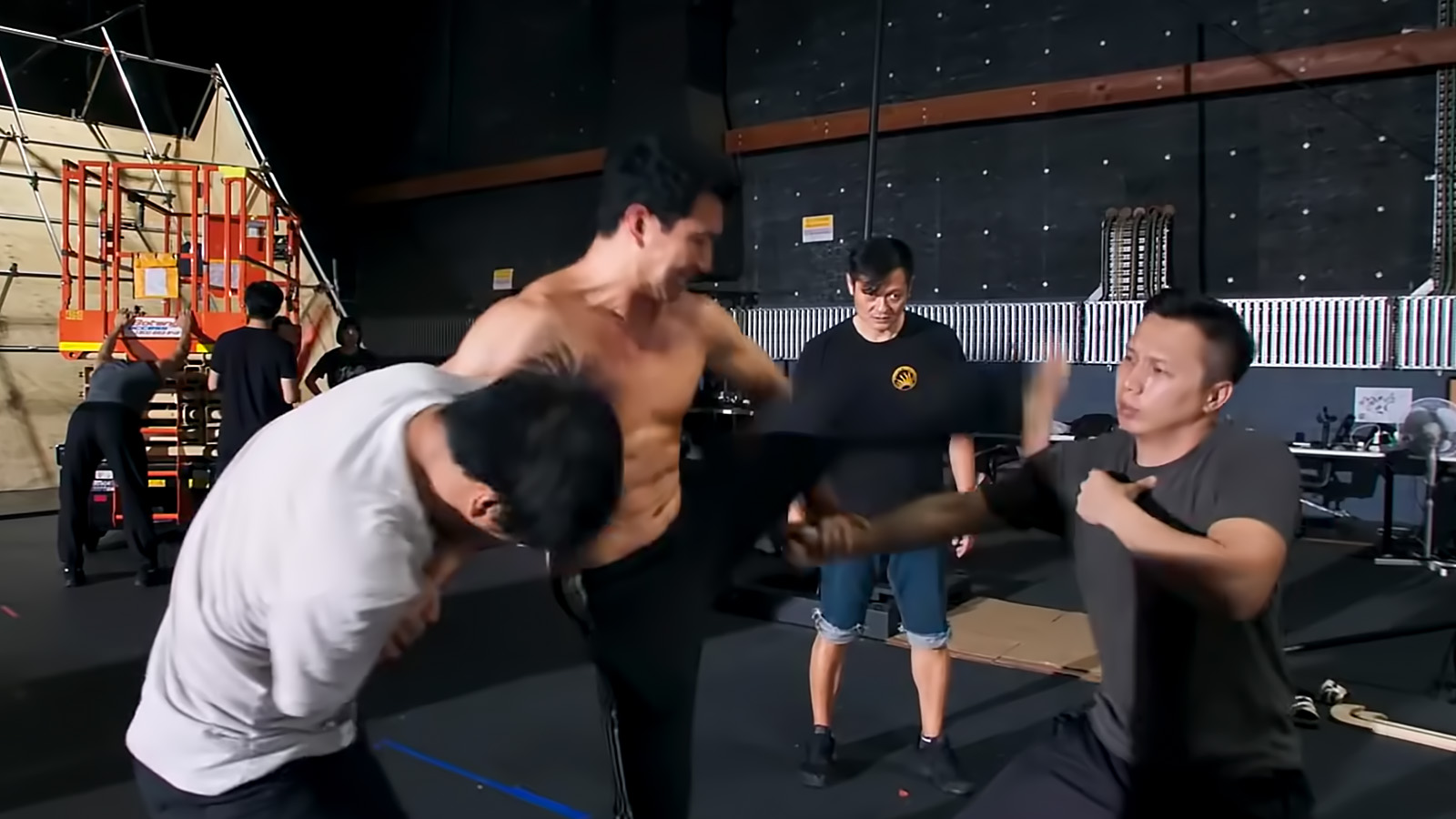
HULLFISH: Talk to me about trying to balance the trickiness of some of the tonal shifts, especially as you start to drop scenes that maybe were giving you some space or some connection between those tonal shifts.
RONALDSDÓTTIR: There are many things you have to balance in a movie like the story, but also you don’t want to overshadow certain moments.
YOON: One of the interesting things that Nat and Destin were balancing—and I think we kept recalibrating through the process—was the relationship between Katy and Shang-Chi early on. You wanted to get the sense that they were really close friends, but you also wanted to introduce characters that were kind of carefree. You definitely wanted to showcase Awkwafina’s incredible humor and spontaneity, but not in such a way where you were distracting from who the hero of the story was.
It was incredible as a resource because we could do these more finely tuned calibrations.
That was definitely something that I think we went through a number of rounds on, and I think this is one of the hallmarks of the Marvel process is that we did a lot of audience screenings. We ended up doing two or three times as many as I’m normally used to, but it was incredible as a resource because we could do these more finely tuned calibrations and get almost immediate feedback on some of those things. I think that process of getting so much good feedback from our audience lends itself to that fine-tuning that you’re talking about.
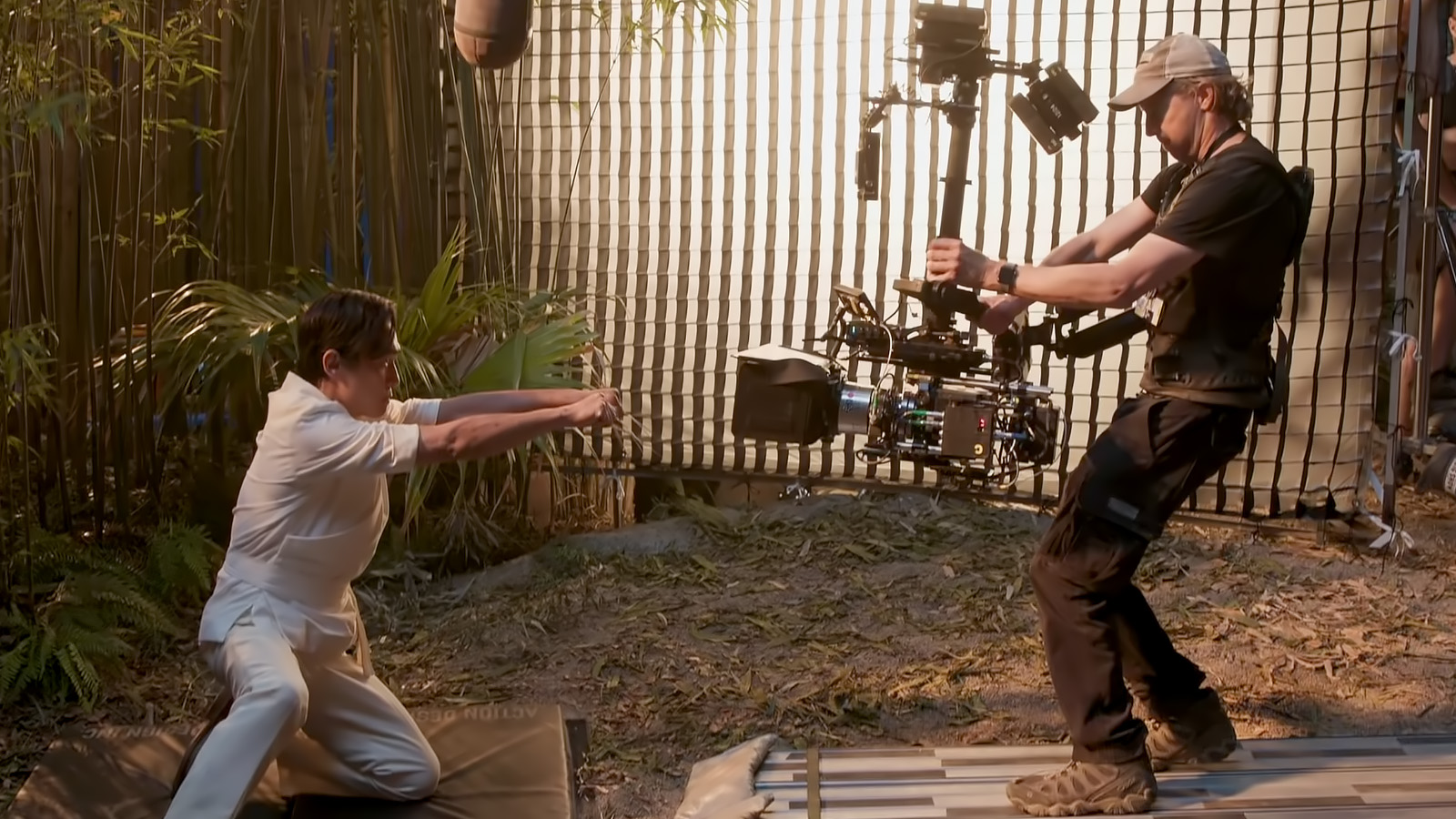
SANDERS: We did six previews. The first three, as Harry said, were remote, and it was difficult. You’re looking at people in masks on a night vision camera and you’re asking, “Did they smile there?” You could hear the movie louder than you could hear them, so you’re wondering, “Did that get a laugh?” It was difficult to ascertain what we wanted even though, as Harry said, the cards and the focus groups were really helpful.
Then, we went to additional photography and we did three more afterwards. For those three screenings, we were able to be there and it was incredibly helpful.
HULLFISH: Is there a difference between the fights in the movie? Some of them felt like circular motion was a big thing and there are other martial arts that are very direct. Did you try to have different fights with different personalities?
YOON: So many fights are homages to other Kung Fu styles and traditions that we’ve seen cinematically. It’s just this beautiful introduction to the variety of styles that we’ve seen. There are a number of different styles that are grounded in different characters and in the situations, and so there are homages to a lot of those cinematic forebears in terms of the beautiful Kung Fu choreography that we’ve seen before.
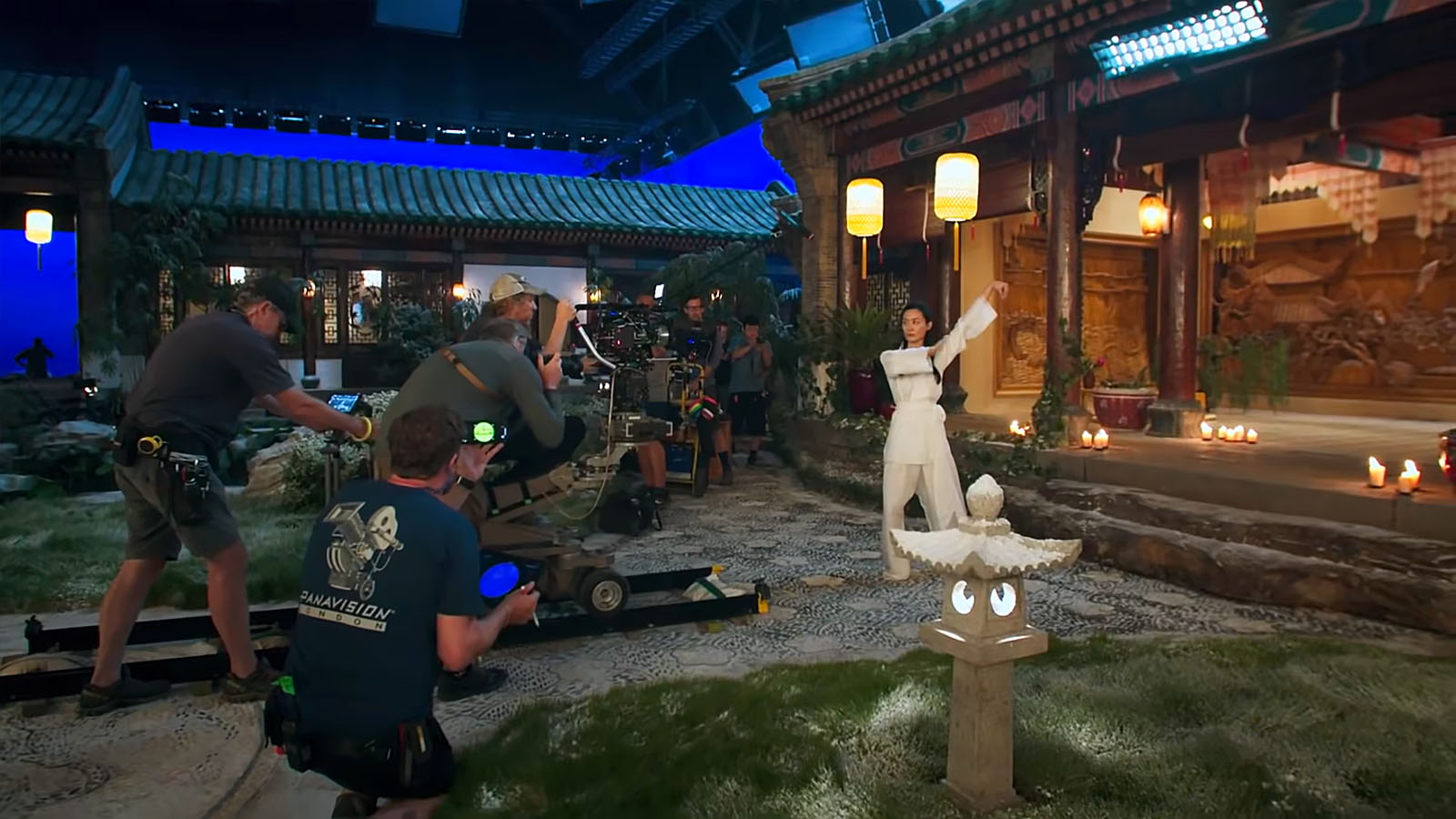
One of the advantages when a lot of stuff is shot in blue screen is that you can really extract some moves from where they were originally used and then use them in a different context, especially if you’re trying to compress time or if you’re trying to bridge certain bits of choreography later on in the process. Ultimately, that blue screen shooting technique ends up giving you some tools that you might not have if things were shot normally.
SANDERS: I’m just thinking of the bus scene. When that scene first came together, it was over eight minutes and it was all great, but we knew it really should be around six minutes. So we asked how we could condense it. The fight goes from this part of the bus, to this part of the bus, to this part… which is really exciting, but it also makes it an interesting challenge to condense it. You’re only in this one area for 20-30 seconds, so you can’t just all of a sudden jump from the front of the bus to the roof. So, how do you still make it really clear and cohesive, but find ways to keep the pace up to where we all are going to want it to be. Those are the fun challenges.
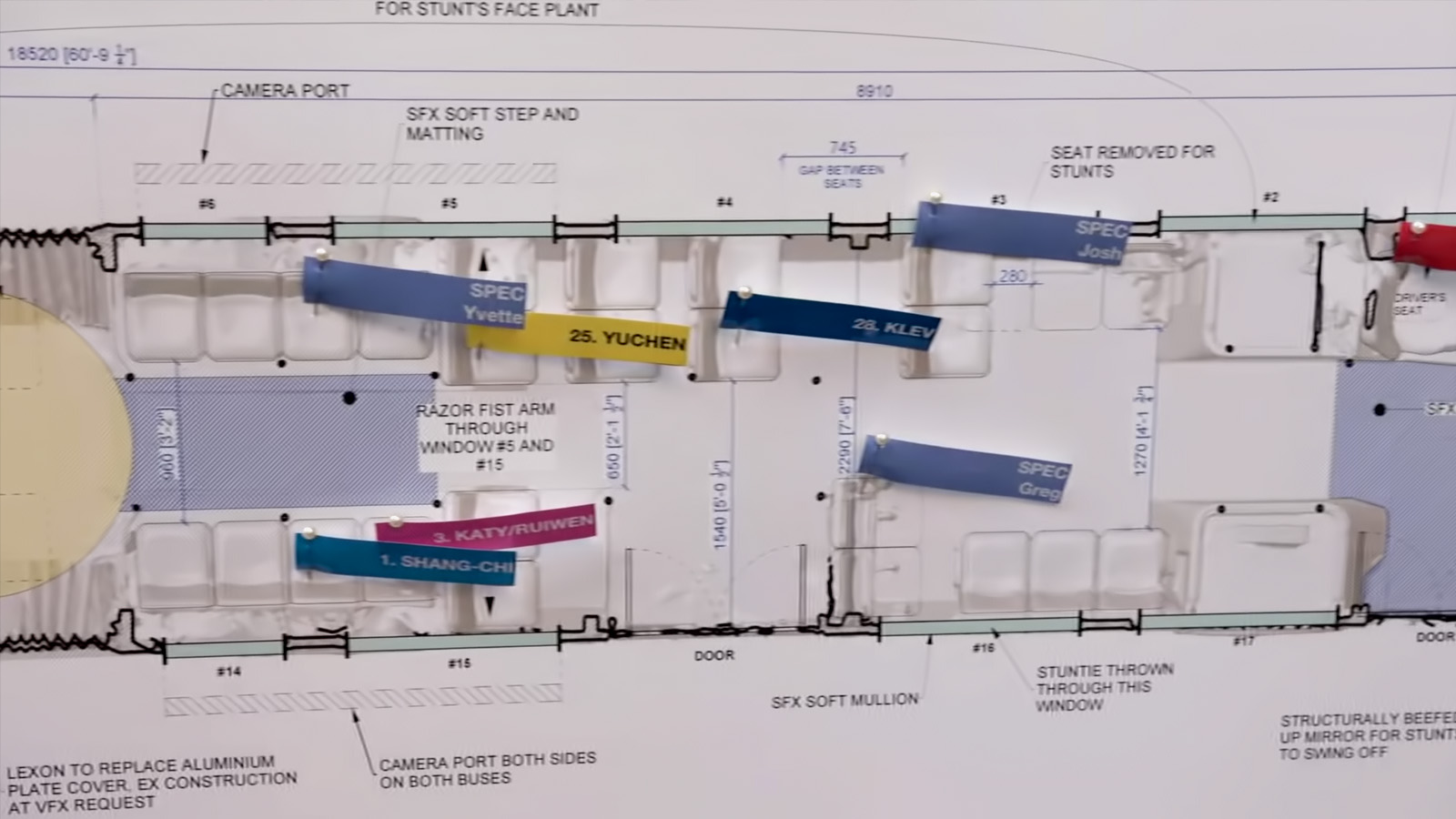
Also, interweaving things like losing jokes. That scene in particular is one where there were great lines in the script, but once we started putting it together, we realized the more you cut away from the action and the fighting, the more it’s dragging. So we let the action lead the way.
HULLFISH: Did either one of you pick up any great fight editing tips from ER [Elísabet Ronaldsdóttir]?
SANDERS: One of the great things about this film—you mentioned the tonal shifts—is that we do have action scenes, we have comedy, we have emotional drama, and it was really refreshing and great to be able to interweave all of those things. It’s not like only one of us did one aspect of it. Everyone did everything.
With those fight scenes, I didn’t have a background in that, so I was really leaning on Elísabet. I would actually recommend this to anyone in a similar position: I was going in early on and looking at her timelines and seeing the little tricks and maneuvers she was doing and learning from that. I would see, “Okay, in this one moment, the stunt work here is great and maybe you wanted to hold on the shot but this one part of the movement was a little too slow. She hit a little speed ramp here. How fast did she make the speed ramp? Oh, okay, I see how she did that in a way that made it totally seamless to where you would never notice that she had hid something there.”
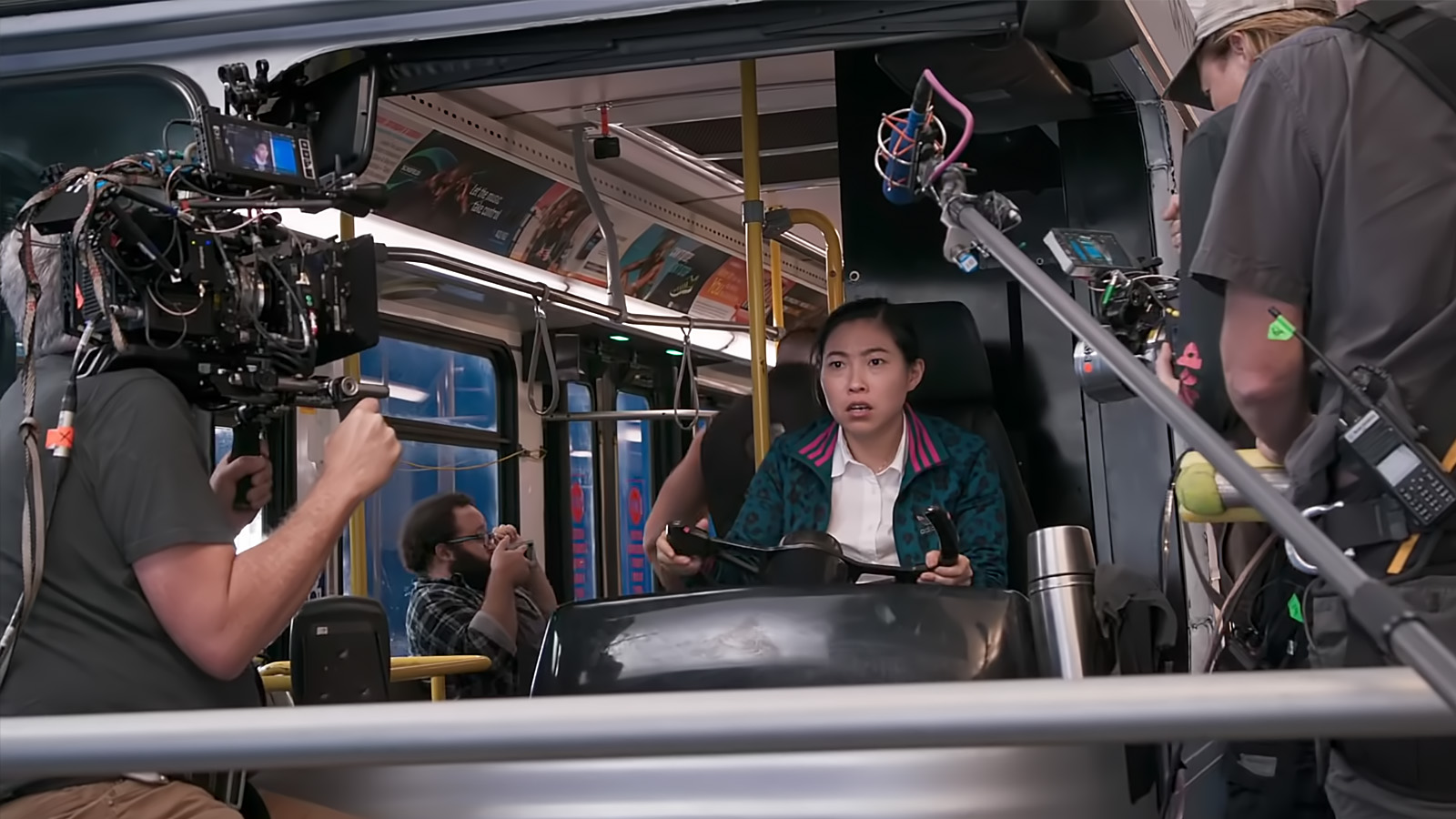
Then, on a kick or a punch, sometimes it just looks great in the can and you don’t have to do anything, but other times if it didn’t come quite close enough and if he couldn’t quite buy it, how do you sell that kick or punch? Sometimes it’s dropping a frame at the moment of impact. There are just all these little tricks. Without a doubt, I was stealing looks at ER’s timelines and finding ways to do that myself.
YOON: The prospect of touching any of ER’s action scenes was so nerve-wracking. I really resisted modifying anything early on in the process. It was only towards the very, very end when we were getting down to the last minute stuff that I thought to change it because they were just so beautifully done, musical, and rhythmic. I think it really showcased, again, the choreography that we’re all singing the praises of and really honored what they were doing.
On a personal note, I usually am not that precious about re-cutting something, but that was definitely one of those things where I thought, “I don’t want to disturb the harmony of what’s already there.”
HULLFISH: But, as you said, sometimes you’ve got to cut two minutes out of this fight. What do you do?
YOON: I think that’s one of the things that really struck me as being refreshing about the kind of brainstorming and collaborative idea generation process that the Marvel trio really brings into place. When we’re going through those cards or when we’re brainstorming after a screening, it feels like everything’s on the table. That kind of fearlessness with the material was a wonderful part of the process for me. I think that’s why the movies get refined in a really amazing way through the cut.
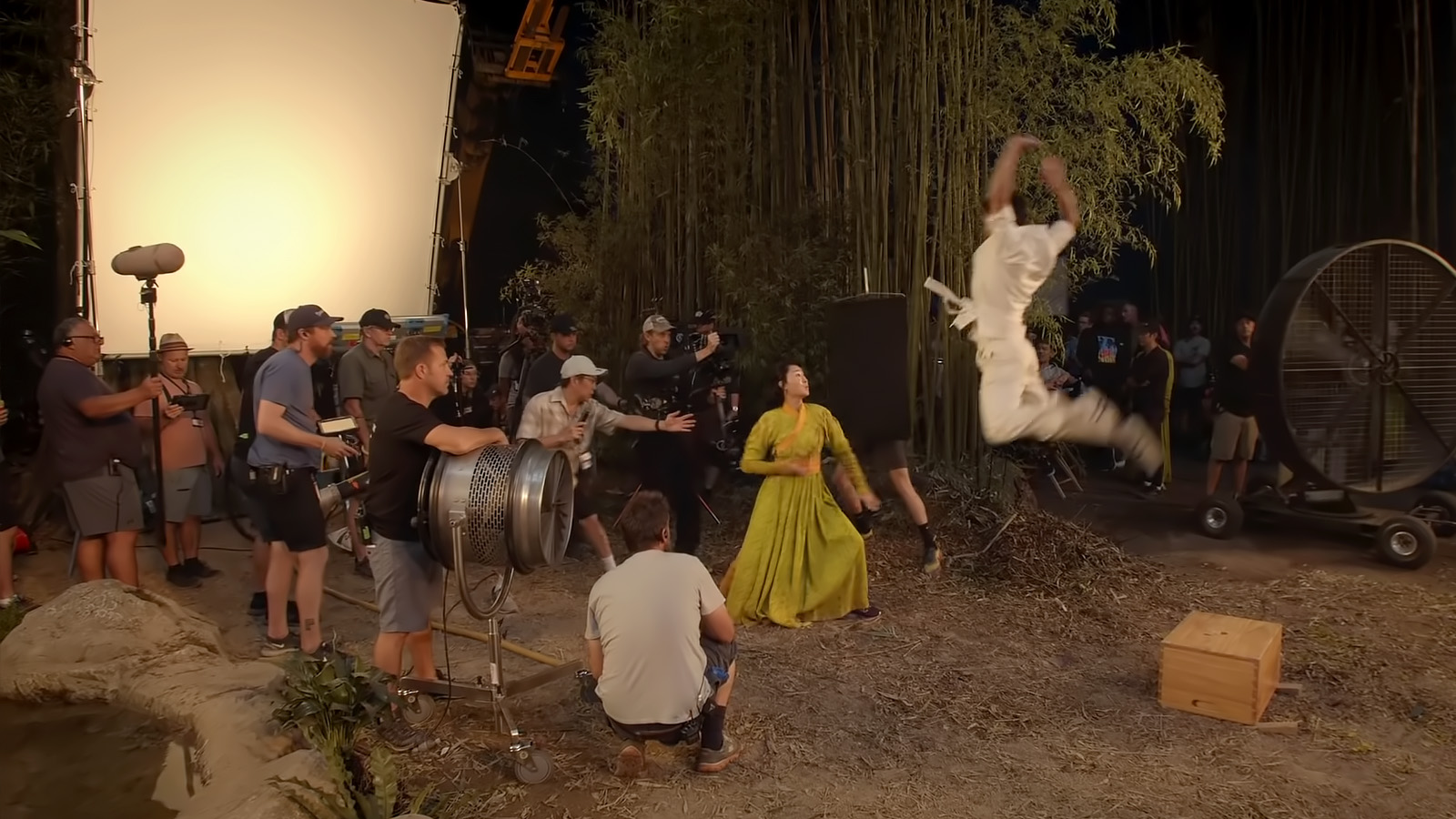
HULLFISH: Elísabet, you mentioned that many of the fights had VFX components that made it tricky. I think when you’re editing, so much of what you’re looking at when you’re deciding when to make a cut is the action that’s taking place in the scene, and if a lot of it’s not there, how do you even pace a scene of rings flying around through the air that you can’t even see?
RONALDSDÓTTIR: Well, that’s something we all have that’s called imagination. You just have to imagine it and find it, but the actors and stunt people were always there. There were rings added and all kinds of fun stuff, but the visual effects absolutely didn’t make it more difficult, but just made it a bit of a challenge to follow through the whole time and make sure that you weren’t going ahead of visual effects and keeping them in the loop.
Because they were working really fast, you had to really make sure all your timing was as accurate as possible because they would take them and just finish them. That was actually a piece of advice I got early on from another editor, Debbie [Berman], who was on Black Panther: just make sure your timing is there because they’re going to take it away, and that was true. They did. They worked really fast.

SANDERS: Our VFX editors became very helpful with that back and forth between us and the VFX department. In particular, when Ed Marsh came on the show as our VFX editor he was a really great middle person to be able to communicate with.
For us to be able to tell Ed when we are using our imagination, “This is what we’re thinking for this,” and work it out with him, then he goes to our VFX supervisors, Chris Townsend, to communicate what our intention was and we could hear from him that maybe he was thinking the same thing or thinking something differently, and we could work together that way. But in those cases, you do have to work with the VFX department pretty closely.
RONALDSDÓTTIR: We spent a lot of time with Ed Marsh. Yes.
HULLFISH: Harry, you were a VFX editor and I was thinking about the amount of management that has to take place just by editors in VFX. Talk to me a little bit about that.
YOON: With the number of audience screenings we had, there were so many things working in parallel, particularly sound editorial, the mix, color, et cetera… If we didn’t have a top-notch crew with the amount of coordination and turnovers that we needed to have, I think we would have been completely lost. Definitely kudos to them.
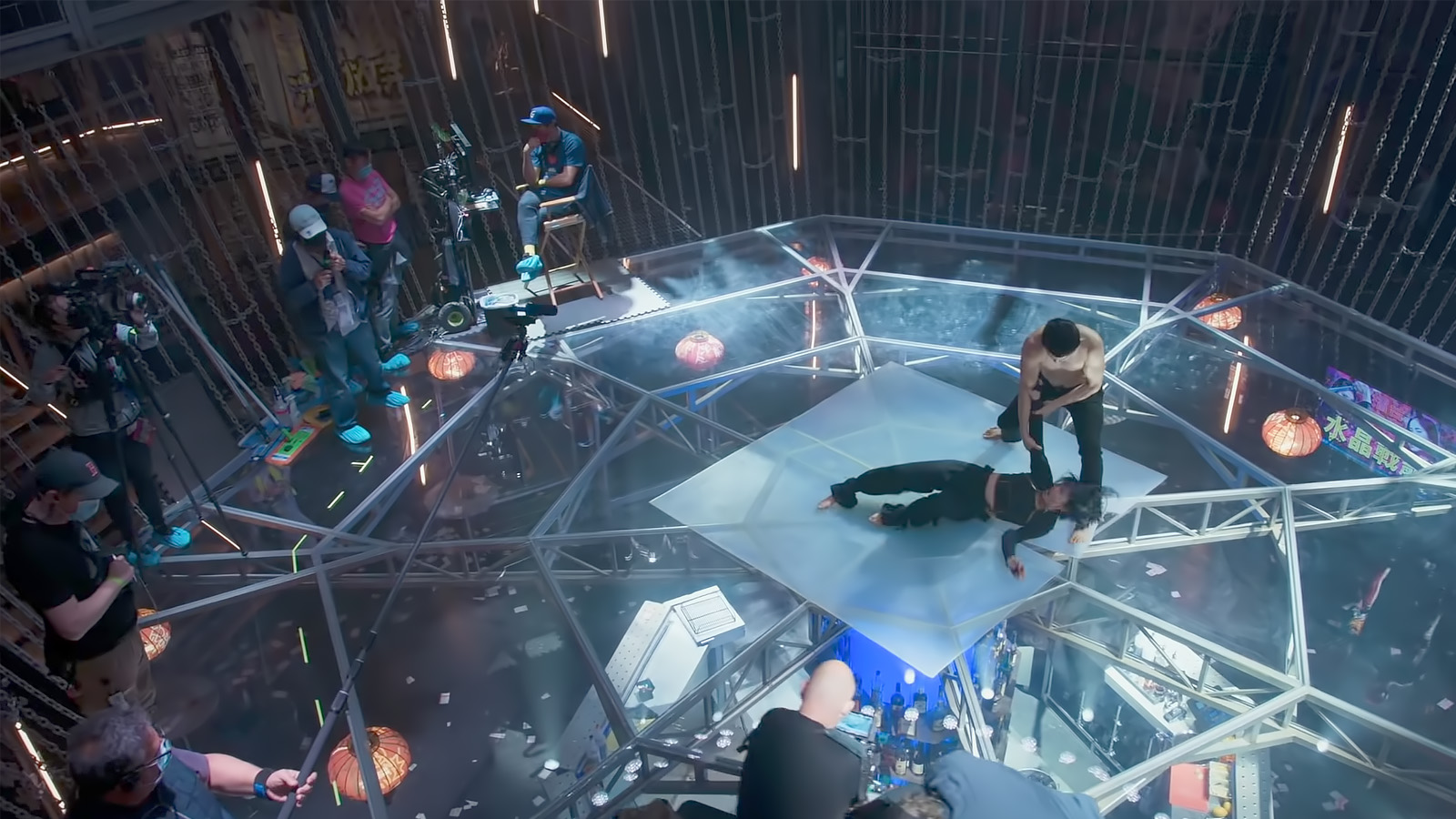
In terms of coordination with visual effects, this team brought us so much joy. They’re the veterans. They’re the ones that have been through four or five Marvel films already. We’re talking about the visual effects supervisor or visual effects producers, all the coordinators. You can tell because they all have the best swag like the cool jackets, sweatshirts, and hoodies.
They’re incredible. The way that they are able to communicate these volumes of notes, the meetings that we have, and all the changes that they’re able to pivot on. That’s the one thing that was really striking about working in post on a Marvel film was that so much of your day is taken up by VFX reviews. So much of what’s happening in visual effects and the decisions that are being made, especially the creative decisions, the rhythmic decisions, the timing decisions, really have an impact on your cut. All of that time was absolutely necessary to have that back and forth and that creative conversation.
SANDERS: To finish talking about our team, just to give credit to the few remaining assistants who didn’t get mentioned, there was also Luca Byrne, Max Fisher, Adomah Ananeh-Firempong.
For me personally, I didn’t come up as an assistant, I wish I had, but I kind of came through this back door of editing tiny films. For me, there was a real education on how to utilize such a huge team and how to delegate, especially with sound work. I love working with sound and music in the temping process, but in this case, there was just no time. There’s too much else going on. So, our sound team, in particular, Matt and Luca did a ton of our sound work while we were in Sydney that really laid the template for where the mix ended up going. We really put that on their shoulders and they did an incredible job.
HULLFISH: When you’re cutting dailies and looking at the setups that you have available to you, how do certain angles or shot sizes speak to you for different moments of a story or a scene?
SANDERS: It is a bit of a dance. I try to watch the dailies through the first time just watching them as an audience member and letting them wash over me. As that’s happening, somewhere in the back of your brain you’re maybe thinking, “You know what, this is the type of scene where I want to start this way, and then this beat is really where this scene turns and so I want to emphasize that beat in that moment by going in close at that moment,” or whatever the case is. You kind of start to work out the dance in your head as you’re watching.
Then, I’ll go through the dailies a second time and really start making those decisions at that point. It is all based on seeing the space that they’re in. So, you think, “We obviously should start on a wide because you need to see the space for this reason or that.” Or maybe you don’t need to see the space and you want to withhold that, so you don’t show the wide at the beginning.
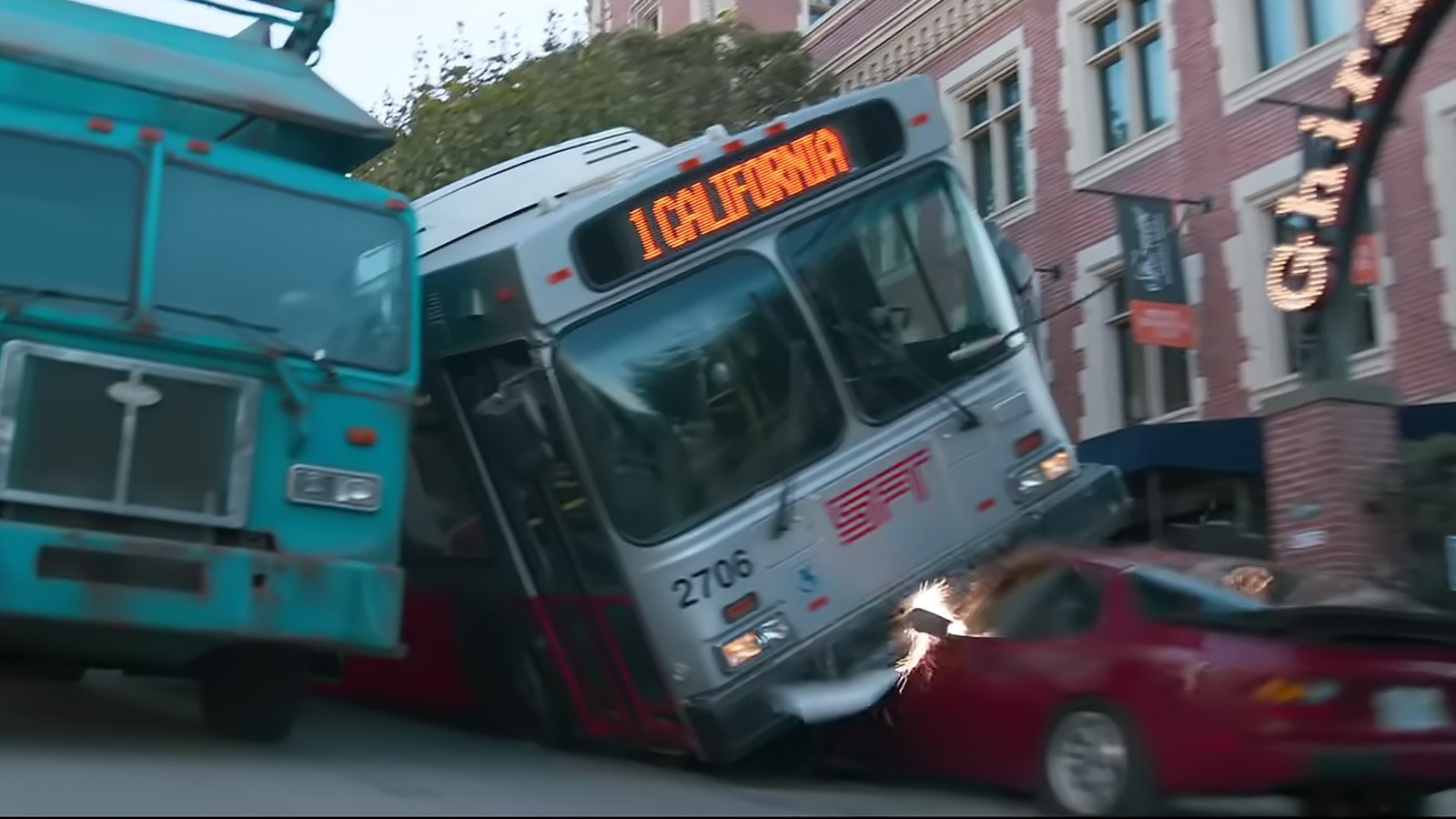
YOON: That’s one of the reasons I like to watch dailies in a stringout because it’s often the time between takes where I’m not just watching what’s going on but almost having that time to digest what I just saw.
So, letting all that rollout happen and all of the prep happened before the next slate, that time as I’m sort of rolling through actually gives me time to think, “Oh, I wonder if that gesture is a really important gesture?” Or, “I wonder if they’re going to change the blocking here because this bit of dialogue seemed too awkward?” Or, “This two-shot definitely is not working for this moment, so I can probably throw out most of this until we get to this line.” There’s all that kind of passive thinking versus active viewing that I think is really important to give yourself space.
RONALDSDÓTTIR: I also think it’s important to know that even though you read the script and might’ve watched tons of stunt vis, you’re still getting to know the movie when you watch the dailies. So sometimes I’ll throw a scene together and then pick it up the next week because after a week of viewing, I know where I want to be in that scene so much better than I might know on the first day. It’s also just being patient. Learn the film.

SANDERS: In the hierarchy of your decisions, performance is at the top. There might be cases where halfway through the scene you’ve gone into close-ups and you would love to stay in close-ups, but the performance isn’t there for this line that you need it to be, and so maybe you need to go out to a medium or go wider. For me, I try to find a way to make that seem like an intentional choice. You may have to work backward and say, “I’ll introduce going to this wider angle a hair earlier.” It’s always a dance. You always try to make it feel very elegant and intentional.
HULLFISH: Near the end of the film, there are some scenes that are completely CG. Were you guys using previs for that stuff? Is it more like animation editing to do those kinds of scenes?
RONALDSDÓTTIR: No, not really because it’s still the actor’s face. Even though there is a CG creature, you still have actors, and we have previs to work with.
YOON: There’s so much previs, but the thing about previs is that because it requires much more rudimentary renderings of characters, by definition the kind of lighting, the kind of emphasis that really impacts editorial choices like clarity of movement, the fact that there are elements involved like water, wind, or vapor that you can’t see in previs that would impact your editorial choices, it is definitely this kind of brinksmanship where you say, “I think it will be this way.”
As Elísabet said, your greatest tool is your imagination. You think, “Okay, with all of these elements in play with the thousands of other things like other creatures, background, and foreground elements and stuff like that, is this long enough to hold on this particular shot to convey what we want to convey?” That becomes a challenge.
It’s not a complete rendering of action, particularly when it comes to clarity.
I think it really helps to have gone through the VFX process to know that what you see in previs is definitely a rendering of action, but it’s not a complete rendering of action, particularly when it comes to clarity. That becomes really challenging. It’s very helpful to have a really good VFX team to give you a sense of when we are going to actually see the shots for that, or a better rendering of the shot to be able to gauge when you want to work on or adjust this particular section to time when you’ll see something more fully rendered.
Also, it’s super critical to have a schedule in place where you’re not locked into things because of delivery schedules. These shots take so much time and so much power to render. In fact, our VFX producer said at one time, we were one of the highest power consumption entities in all of New Zealand because of the render farms that were rendering these incredibly complex shots at Weta.
They take so much time that you want to at least have a little bit of wiggle room to trim, extend, or maybe go in a different direction if something’s obviously not working. So, it becomes really nuanced towards the end.

HULLFISH: Like you mentioned with having your timings right, it’s also that you’ve chosen the right angle or the right performance to be on. Nat and Harry, you have both done films where you could probably be in the mix and say, “Well, let’s just switch out this shot,” but on this one, you couldn’t.
RONALDSDÓTTIR: Well, you can but you only do it through dialogue with your director, with the visual effects team, and visual effects editors. This is not carved in stone. It’s developing through the whole editing period.
SANDERS: There are so many shots and scenes that are going to be so time-consuming on the VFX side that pretty much right at the beginning of production, Damian Carr, our VFX producer, came to us and gave us a list of how many shots we were going to need to turn over that month. Then, we turn over and the director is on set and he’s so busy that we’re barely seeing him.

They asked for maybe 60 percent confidence that the shot would be in the finished movie, and if it was one that you weren’t confident where you felt like in the back of your mind, “We’re probably going to lose this scene,” you would hold off on turning those over. So, we would have to bring Destin over and tell him what VFX is requesting and make sure that we had the takes and timings that he also agreed with.
There were definitely moments early on where he and I were concerned about the possibility that we would get locked into things that in the end wouldn’t be the best thing for the movie but would be too late to change because we’d gone down such a long road VFX-wise. To what Harry mentioned earlier, that ended up not being a concern at all in the end. There were big things that we ended up throwing out late because it wasn’t the right thing for the movie and we pivoted and did something else instead.
It really is all about story and what’s best for the movie, and that was definitely a relief.
There were scenes or events that we found out weren’t quite working through previewing. In some cases, they were very effects-heavy sequences, and there was no hesitation that if it wasn’t quite working and wasn’t the right thing for the movie, it would be cut even though the effects team had been working on it for eight months, and I don’t even want to know how much money had been spent on it.
YOON: Personally, you don’t see the names of ACs, camera operators, or production designers on particular shots in dailies, so when you lose those shots editorially, it’s like this kind of abstract concept that the crew worked on it. But because they often have the name of the artist on the slate for visual effects shots, there are shots that, you know “Joe Whatever” worked on this shot for months. So, you feel an extra pang of guilt to know that if we cut this, then all of those months of work are not going to be seen by the audience, but you still have to make that decision.
That makes it extra hard personally, to see the names of the people whose work you’re leaving on the cutting room floor. So, apologies to all those amazing artists that unfortunately didn’t necessarily make the final cut, but their work consistently was really remarkable.
Me laughing at the people who thought we’d flop pic.twitter.com/7UoLqRXlCJ
— Simu Liu (@SimuLiu) September 6, 2021
HULLFISH: Well, I know that you guys are all in demand and have other things to be doing today. I really appreciate the time that you spent with me and thank you so much for talking about this movie. It was really an exciting ride.
SANDERS: Thank you, Steve.
RONALDSDÓTTIR: Nice to talk to you again
YOON: Great talking to you again.


